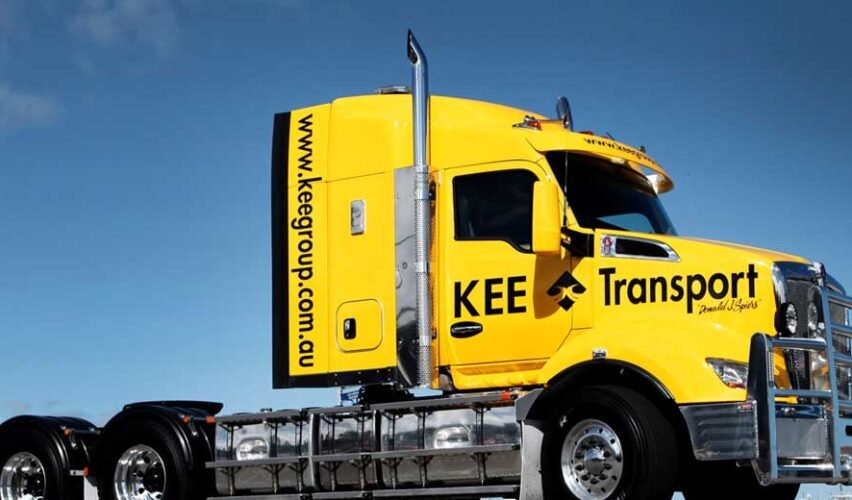Choosing the right prime mover is critical for any heavy hauling, logistics, or large-scale transportation project. Whether working on construction, mining, agriculture, or logistics, selecting the appropriate prime mover can improve productivity, reduce operating costs, and ensure that your equipment runs smoothly, notes Atlas Management experts.
But with so many options available, how do you choose a trusted prime mover hire? This guide will walk you through everything you need to know to choose the right prime mover for your project. From understanding your project requirements to analyzing engine capacity, safety features, and maintenance costs, you’ll be well-prepared to make an informed decision.
What is a Prime Mover?
A prime mover, often referred to as a heavy-duty truck, is designed to haul trailers and transport large or heavy cargo over long or short distances. Prime movers are equipped with powerful engines and durable chassis to handle immense loads, making them essential in industries like construction, transport logistics, mining, and agriculture.
Prime movers are classified based on their configurations, towing capacities, and applications:
- Single Axle Prime Movers: Suitable for lighter loads and shorter distances.
- Bogie Drive Prime Movers: Best for heavy-duty hauling and rough terrain.
- Heavy Haul Prime Movers: Ideal for oversized cargo and extremely heavy loads.
Factors to Consider When Choosing a Prime Mover
Understand Your Project Requirements
The first step in choosing the right prime mover is to assess your project’s specific needs:
- Load Capacity: How much weight will the prime mover be expected to haul? Knowing the gross vehicle mass (GVM) and gross combined mass (GCM) will help determine the required towing power.
- Distance: Will the prime mover be traveling long distances, short hauls, or operating locally on-site?
- Terrain: Consider whether the routes include steep inclines, off-road conditions, or rough surfaces.
- Duration: Will the prime mover need to run continuously, or will it operate in short bursts?
Matching the prime mover’s specifications to your project requirements ensures you do not overpay for unnecessary capacity or underpower your operation.
Choose the Right Configuration
Prime movers are available in various axle and drivetrain configurations. The two most common types are:
6×4 Configuration
- Features six wheels, with four powered wheels.
- Suitable for heavy loads and demanding conditions.
- Ideal for construction sites, mining, and long-haul logistics.
4×2 Configuration
- Features four wheels, with two powered wheels.
- Lightweight and fuel-efficient for smaller loads.
- Best for urban deliveries or short-haul transportation.
Other configurations, such as 8×4 or 10×4, are designed for specialized heavy-haul applications requiring maximum towing power and stability.
Engine Performance and Fuel Efficiency
The engine is the heart of a prime mover, and its power output determines how well it can handle the intended load.
- Horsepower: Measured in HP, this determines the engine’s pulling power. Heavy haul projects generally require prime movers with 450-600 HP engines.
- Torque: Measured in Nm (Newton meters), torque provides the pulling force needed to move heavy loads, especially when starting or climbing hills.
- Fuel Efficiency: For long-haul operations, fuel costs are a significant factor. Opt for modern prime movers with fuel-efficient engines, such as those that comply with Euro 5 or Euro 6 emission standards.
When comparing options, consider both the engine’s performance and long-term operating costs, as fuel inefficiencies can significantly impact your budget.
Safety Features
Safety should always be a top priority, especially when operating heavy vehicles. Modern prime movers are equipped with advanced safety systems to minimize risks for drivers and cargo.
Key safety features to look for include:
- Anti-lock Braking System (ABS): Prevents wheels from locking during sudden braking.
- Electronic Stability Control (ESC): Enhances stability, reducing the risk of rollovers.
- Driver Assistance Systems: Includes lane departure warnings, adaptive cruise control, and collision avoidance systems.
- Emergency Braking: Helps prevent collisions by automatically applying brakes when obstacles are detected.
- Visibility Features: Cameras, blind-spot monitoring, and improved mirrors ensure better driver visibility.
Choosing a prime mover with robust safety features not only protects lives but also helps reduce insurance premiums and downtime caused by accidents.
Evaluate Maintenance and After-Sales Support
Downtime caused by maintenance and repairs can significantly impact your project timelines. Therefore, it is essential to consider:
- Ease of Maintenance: Choose a prime mover that has a reliable service history and is easy to maintain.
- Availability of Spare Parts: Ensure that spare parts are readily available to minimize delays during repairs.
- After-Sales Support: Look for brands and suppliers that offer strong after-sales support, including warranties, servicing contracts, and roadside assistance.
- Service Intervals: Modern prime movers with longer service intervals can reduce operating costs over time.
Compare Brands and Models
Some of the leading prime mover brands include:
- Kenworth: Known for their durability and powerful performance, particularly in harsh Australian conditions.
- Volvo: Recognized for fuel efficiency, advanced safety features, and driver comfort.
- Scania: Offers innovative engine technology, excellent fuel economy, and eco-friendly options.
- Freightliner: Reliable trucks with a reputation for longevity and cost-effectiveness.
- Mercedes-Benz: Combines performance with cutting-edge technology and safety systems.
Compare models from these brands based on features, specifications, fuel consumption, and total cost of ownership.
Budget Considerations
Balancing performance and budget is critical when selecting a prime mover. Consider both the upfront cost and long-term expenses:
- Purchase Price: High-quality, brand-new prime movers may be expensive but often come with warranties and better fuel efficiency.
- Operating Costs: Include fuel, maintenance, insurance, and repairs.
- Resale Value: Some brands retain higher resale values than others, making them a smarter long-term investment.
- Lease vs. Buy: Leasing a prime mover can be a cost-effective option if your project has a shorter timeline.
Conclusion
Choosing the right prime mover for your project is a crucial decision that impacts productivity, efficiency, and costs. By carefully analyzing your project’s requirements, selecting the appropriate configuration, and prioritizing engine performance, safety features, and after-sales support, you can ensure your investment pays off.
Whether you are hauling heavy equipment across rugged construction sites or transporting cargo on long highways, the right prime mover will keep your project on track and within budget. Take the time to compare options, consult with experts, and make an informed decision to drive your business forward.



